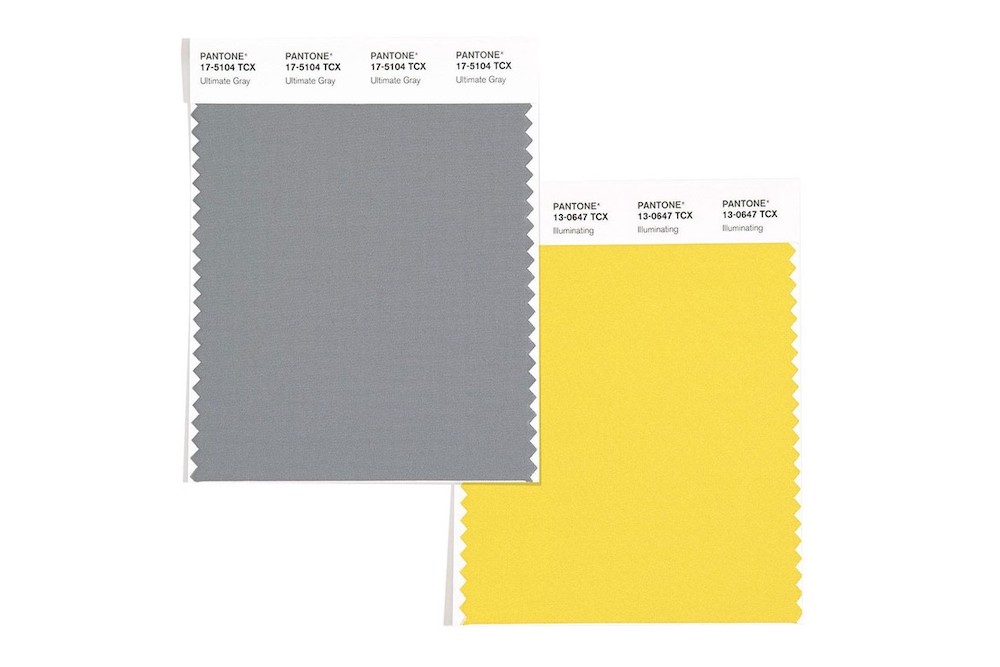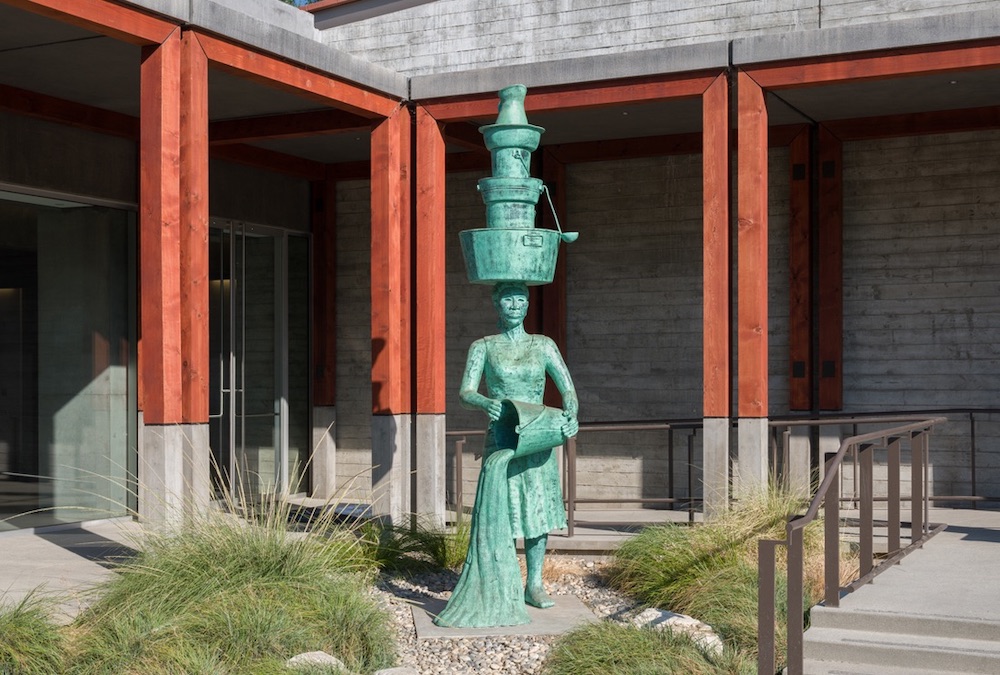SoCal’s Museums
Museums have been shut down (again), which doesn’t effect the city of Los Angeles too much as museums weren’t reopened except for a very short week or so. Neither LACMA nor the Hammer ever reopened after mid-March shutdowns and, alas, the Hammer-Huntington’s joint exhibition “Made in L.A. 2020” (reviewed in this issue) is languishing in their galleries.
Pomona College’s Benton Museum of Art, in a brand new $44 million building, was supposed to open this fall, but COVID postponed that plan. The three opening exhibitions are installed, however, and after months of planning and re-planning, I finally made it in for a visit. It’s a simple, contemporary building organized around a courtyard that opens on one side to the street. In one corner of the courtyard is a commissioned bronze sculpture by one of LA’s most celebrated artists, Alison Saar. The 12-foot-tall Imbue (2020) depicts Yemoja, West African deity of the waters and mother of all living things, a protector of women and children. She stands with a series of buckets and water containers on her head, while pouring out a stream of water from a pail. As typical of Saar’s oeuvre, the figure is strong and bold, a force to be reckoned with.
Inside, the exhibition space is twice the size of the old building’s, and the flow from gallery to gallery feels a lot more comfortable. Two galleries display “Of Aether and Earthe,” an exhibition of Saar’s sculpture and installation, as well as drawing and painting. The show is thematically woven around the elements of water and earth, says senior curator Rebecca McGrew. (A parallel exhibition will open at the Armory Center for the Arts in Pasadena in 2021.) It is arguably the best installation of Saar’s work I’ve ever seen, with the 3D work very beautifully laid out and lit, thanks to exhibition designer Gary Murphy.
One sculpture that’s especially memorable is Breach (2016) which shows an African American woman poling through imagined waters—on her head is balanced her worldly possessions, a stack of trunks, a chair, a barrel, and several pails. There’s something about trying to balance all those things atop a human frame that feels both daunting and also very heroic. Breach was inspired by the Great Mississippi Flood of 1927, with its echo in Hurricane Katrina and its disastrous aftermath.
Other inaugural shows at the Benton are a selection of Alia Ali’s work and a look at what Pomona College holds in its own collection – quite surprising, ranging from Renaissance painting to contemporary ceramics. Ali’s photomontage work is in the reception area and corridor and her video installation in a special gallery. McGrew says they will continue to show contemporary and historical exhibitions as before, although “We hope to showcase our collection more, it’s been an underutilized resource.” For more information and projected opening date, check out their website: https://www.pomona.edu/museum.
New Year; New Color

Somber reflection and bright optimism are the watchwords as we look to the New Year. There will no New Year’s Eve bashes, no Rose Bowl Parade, no January 1 potlucks, but maybe we will raise a toast in small RL gatherings or on Zoom, as some of us mourn the untimely passing of friends and family. Those two sentiments, somber reflection and bright optimism, are signaled in the very choice(s) of 2021’s “Color of the Year” by the Pantone Color Institute.
Probably better known to designers than artists, the organization helps set a theme color for each year, although this year they’ve chosen two—PANTONE 17-5104 Ultimate Gray and PANTONE 13-0647 Illuminating. Ultimate Gray is a medium-dark, warm gray, neutral but serious, and Illuminating is a lemony yellow. “The selection of two independent colors highlight how different elements come together to express a message of strength and hopefulness that is both enduring and uplifting,” said Leatrice Eiseman, executive director of the Pantone Color Institute, in a press release, “conveying the idea that it’s not about one color or one person, it’s about more than one.”
Yes, the decision was made with COVID and politics under consideration. “We know we’re living in an unusual time,” said the Institute’s Vice President Laurie Pressman in a TIME magazine interview: “Whether it’s about the pandemic or the uprisings around the world, we’re trying to imagine the future as we move into this very different time.” Since that announcement, our first COVID vaccine has been approved by the FDA, and the Electoral College has declared Joe Biden the next president of the United States, both very good news.
Gallery Glimpses

Kirsten Deirup, Oracle, 2020, oil on canvas, 24 x 30 in, photo by Jacob Vasa.
Here are a couple shows I thought especially good on my recent (limited) rounds. One was “Kirsten Dierup: Remote View” (through Jan. 2) at De Boer Gallery, south of downtown LA. Deirup’s paintings of various women’s shoes in Surrealistic landscapes are kicky and imaginative. A lime green stiletto poses in the midst of a gnarled forest clearing in Oracle, a platform shoe sits in the soupy stew of Swamp Pump. The gallery is small but choice—be sure to ring and arrange your visit before going.
One of the best shows of the year has to be Mark Steven Greenfield’s, “Black Madonna” which just closed at William Turner Gallery. His small paintings are jewels of artistic insurrection, with a format appropriated from Renaissance devotional paintings featuring Mary cradling the baby Jesus. Except now both mother and Jesus are African American figures, with updated backgrounds of Confederate statues being pulled down in public spaces or a hooded Ku Klux Klansman being burned at the stake. These works are exquisitely painted and reinterpreted. They suggest that, yes, we can remake history by reimagining it.
So here’s to remaking history in 2021—first we imagined the change, now we will live it. Happy 2021, in all its solemnity and hope!


